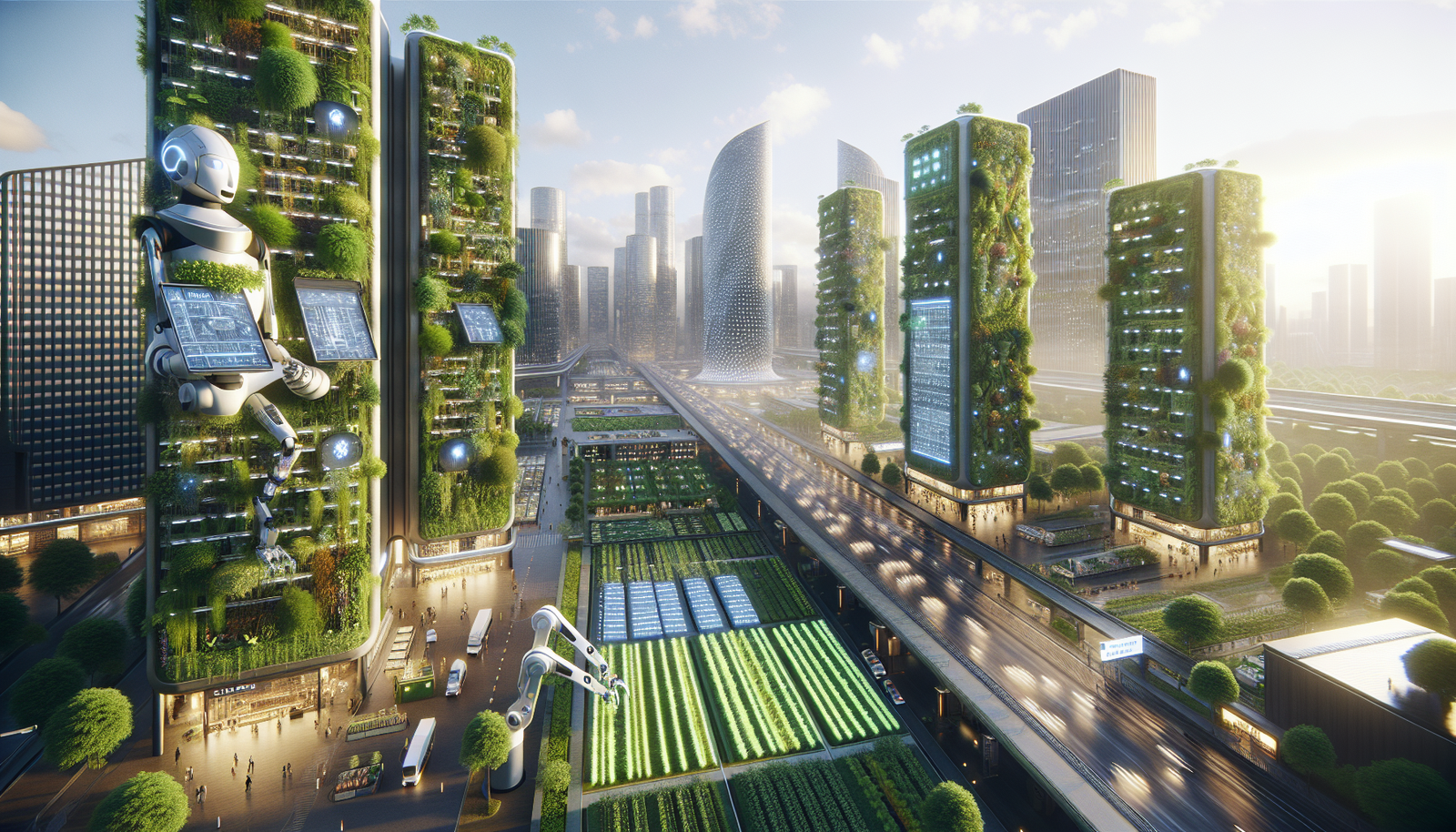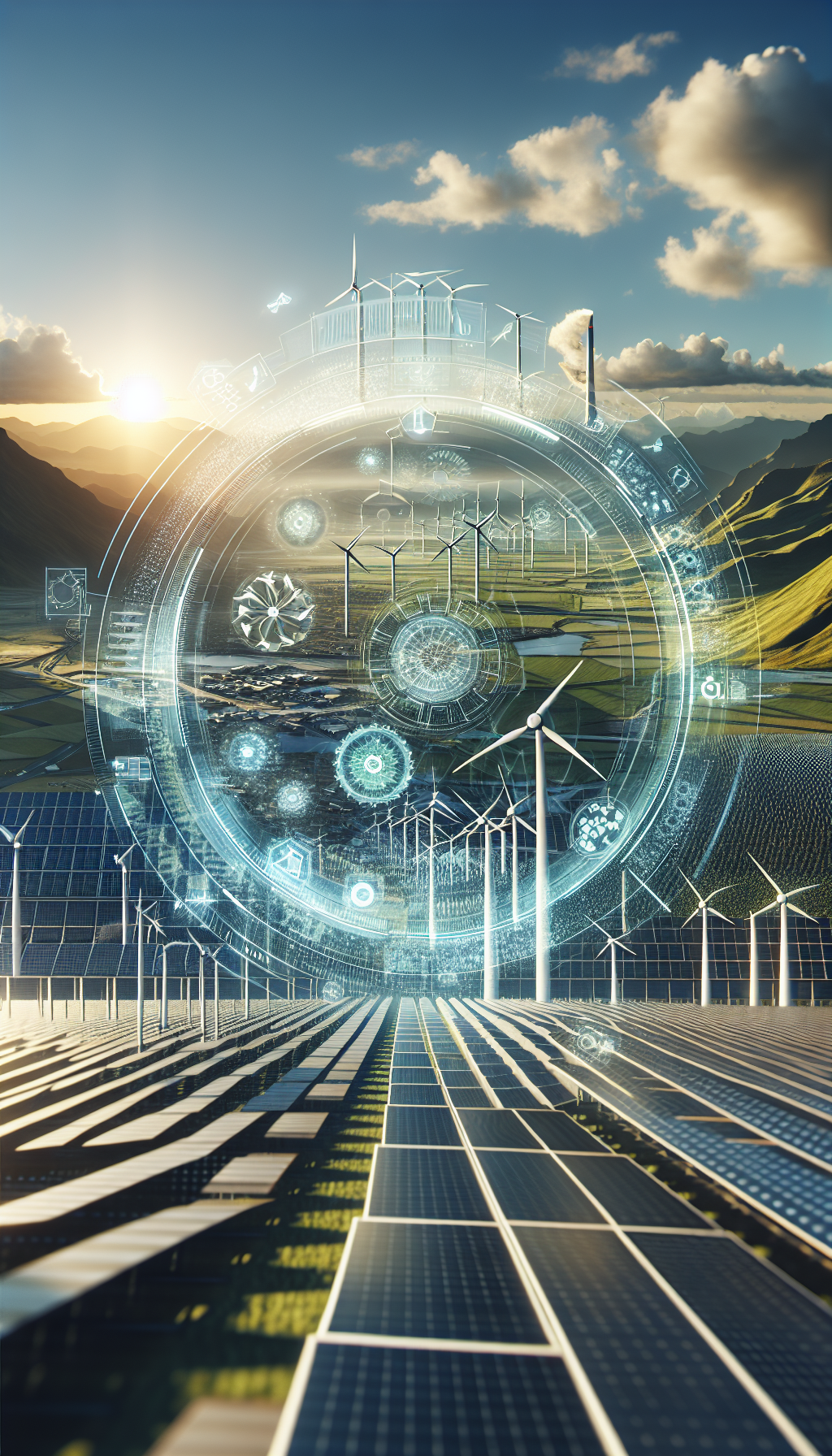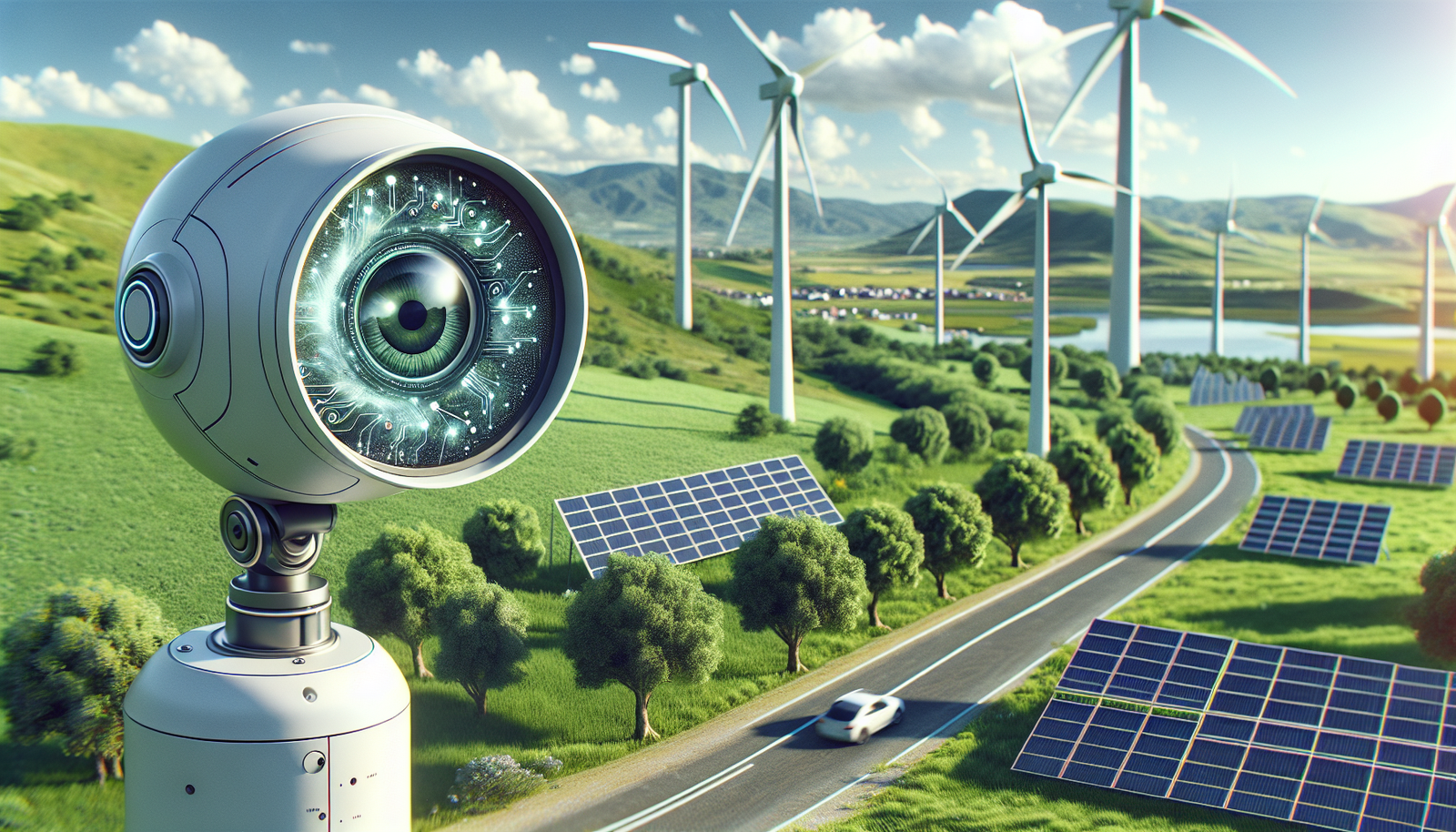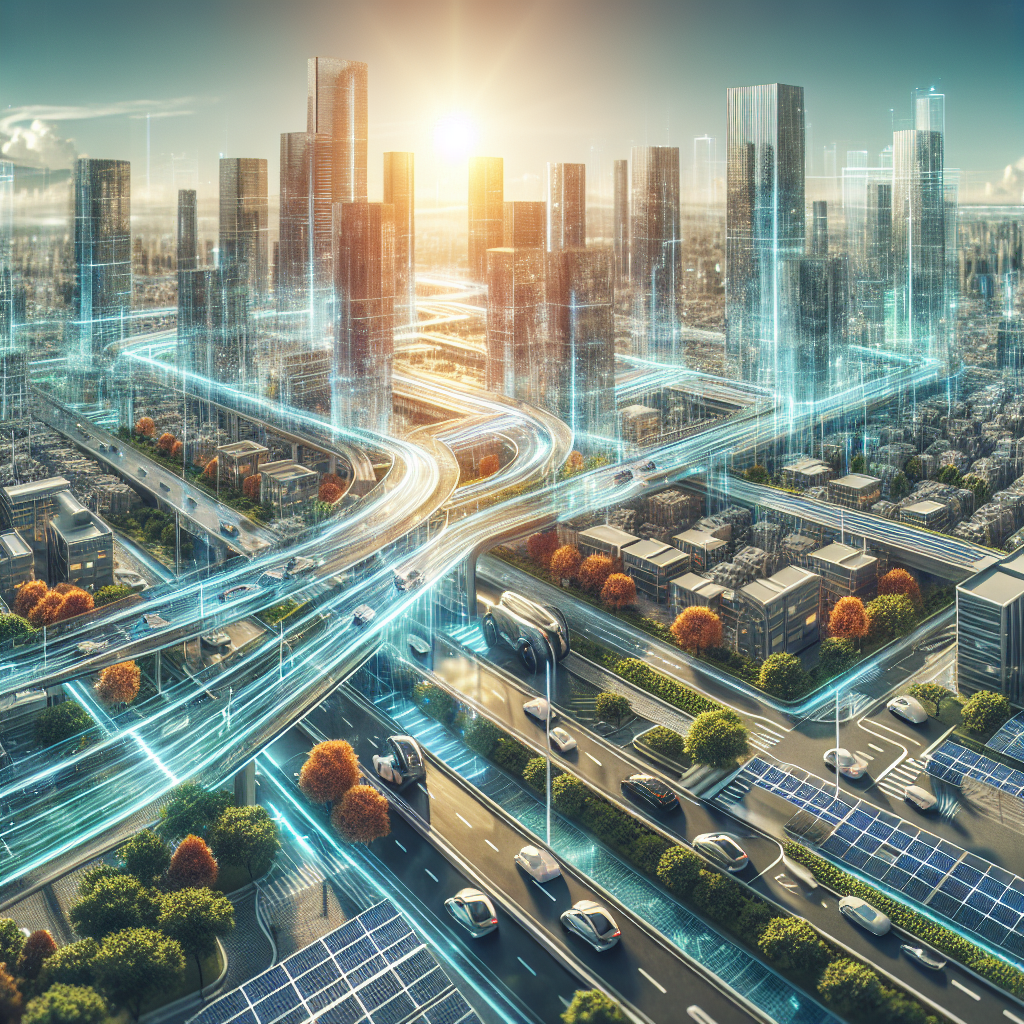The Rise of AI in Environmental Science
The integration of artificial intelligence in environmental science marks a significant turning point in how we approach ecological challenges. AI technology is increasingly being used to process vast amounts of environmental data, providing unprecedented insights into climate patterns, biodiversity, and ecosystem health. This transformation is largely fueled by the ability of AI to analyze complex datasets that were previously intractable, enabling scientists to make more informed decisions about conservation and sustainability efforts.
Key Applications of AI in Environmental Science include:
- Predictive Climate Modeling: AI algorithms are being leveraged to enhance climate models, making them more accurate and reliable. This allows scientists to better predict climate change impacts and develop effective mitigation strategies.
- Biodiversity Monitoring: Through image recognition and machine learning, AI is helping to monitor wildlife populations and biodiversity, providing critical data for conservation efforts.
- Resource Management: AI systems are optimizing the use of natural resources by analyzing consumption patterns and suggesting sustainable practices.
To illustrate the impact of AI in environmental science, consider the following data on the reduction of carbon emissions through AI-driven energy efficiency initiatives:
| Year | Carbon Emissions Reduction (Million Tons) |
|---|---|
| 2020 | 150 |
| 2021 | 180 |
| 2022 | 210 |
This table highlights the growing potential of AI to contribute to significant environmental benefits. As AI technology continues to evolve, its role in environmental science is expected to expand, offering new solutions to some of the most pressing ecological challenges of our time.
AI-Driven Energy Efficiency
Artificial Intelligence (AI) has become a cornerstone in enhancing energy efficiency across various sectors. By leveraging AI algorithms, industries can optimize energy consumption, reduce waste, and significantly lower carbon emissions. For instance, AI systems can analyze vast amounts of data from energy grids to predict demand fluctuations and adjust energy distribution accordingly, thereby minimizing energy loss. This approach not only conserves energy but also reduces operational costs for businesses.
One of the most promising applications of AI in energy efficiency is in the optimization of heating, ventilation, and air conditioning (HVAC) systems. Intelligent HVAC systems equipped with AI can learn from user preferences and environmental conditions to adjust settings automatically, ensuring optimal energy use without compromising comfort. A study showed that AI-driven HVAC systems could reduce energy consumption by up to 30%. Below is a table illustrating potential energy savings through AI applications:
| Application | Potential Energy Savings |
|---|---|
| AI-Powered Smart Grids | 20-25% |
| Intelligent HVAC Systems | 25-30% |
| AI in Industrial Automation | 15-20% |
Moreover, AI facilitates the integration of renewable energy sources into the existing energy infrastructure. By predicting weather patterns and energy production levels from solar and wind sources, AI can help balance the load on the grid and ensure a steady supply of clean energy. This capability is crucial as the world transitions towards more sustainable energy sources. In summary, AI not only enhances energy efficiency but also supports the broader goal of reducing dependence on fossil fuels and mitigating climate change.
Smart Agriculture and AI
Smart agriculture is rapidly evolving with the integration of Artificial Intelligence (AI) technologies, leading to significant improvements in productivity and sustainability. AI technologies are being used to analyze vast amounts of data collected from various sources, such as weather patterns, soil conditions, and crop health. By utilizing AI-driven insights, farmers can make more informed decisions, optimize resource use, and reduce environmental impact.
One of the significant advancements in smart agriculture is the use of AI-powered drones and sensors. These technologies enable precise monitoring of crop health, allowing for timely interventions. For instance, drones equipped with multispectral sensors can detect variations in crop health, indicating areas that require more attention. Farmers can then target these areas specifically, reducing the need for excessive pesticide and fertilizer use.
Another aspect where AI is making a substantial impact is through predictive analytics. AI algorithms can forecast weather conditions, pest infestations, and crop yields with remarkable accuracy. This predictive capability allows farmers to plan their planting and harvesting schedules more effectively, minimizing waste and maximizing yield. Additionally, AI-powered systems can recommend the best crop varieties to plant based on soil and climate conditions, further enhancing sustainability.
| AI Application | Benefit |
|---|---|
| AI-Powered Drones | Precise crop health monitoring |
| Predictive Analytics | Improved weather and yield forecasts |
| Soil Monitoring Sensors | Optimized resource use |
AI’s role in smart agriculture extends to automated machinery as well. Autonomous tractors and harvesters, guided by AI, can operate with high efficiency and accuracy, reducing labor costs and human error. These machines can work around the clock, increasing productivity while maintaining consistency in farming practices. As AI technology continues to advance, the potential for creating more sustainable and efficient agricultural systems becomes increasingly attainable.
AI in Waste Management
Artificial Intelligence (AI) has emerged as a transformative force in waste management, significantly enhancing efficiency and effectiveness in handling waste. By leveraging AI technologies, waste management systems can optimize sorting processes, reduce landfill use, and promote recycling efforts. These advancements contribute to a more sustainable environment by minimizing the ecological footprint of waste.
One of the key areas where AI is making a substantial impact is in the sorting and categorization of waste. Traditional methods of waste sorting are labor-intensive and prone to human error. AI systems, equipped with computer vision and machine learning algorithms, can accurately identify and separate different types of waste materials. This not only speeds up the recycling process but also ensures higher purity levels in recycled materials, making recycling economically viable.
AI technologies are also being utilized to optimize waste collection routes and schedules. By analyzing data on waste generation patterns and using predictive analytics, AI can suggest the most efficient collection routes, reducing fuel consumption and greenhouse gas emissions. This not only lowers operational costs but also minimizes the environmental impact of waste collection activities.
Furthermore, AI applications in waste management extend to monitoring and maintaining waste processing facilities. Predictive maintenance powered by AI can foresee equipment failures, allowing for timely interventions and reducing downtime. This ensures that waste processing plants operate at maximum efficiency, further contributing to sustainable waste management practices.
| AI Application | Benefits |
|---|---|
| Waste Sorting | Increases accuracy and efficiency in separating recyclables from waste. |
| Route Optimization | Reduces fuel consumption and emissions by optimizing waste collection routes. |
| Predictive Maintenance | Prevents equipment failures, reducing downtime and maintaining processing efficiency. |
AI for Water Conservation
Artificial Intelligence (AI) is playing a pivotal role in water conservation efforts worldwide. With growing concerns over water scarcity, AI technologies are being employed to optimize water usage in various sectors. These technologies not only help in reducing wastage but also ensure sustainable management of water resources.
One of the key applications of AI in water conservation is in the field of agriculture, where it aids in precise irrigation. By analyzing data from sensors and weather forecasts, AI systems can determine the exact amount of water required for crops, thereby minimizing excess use. This method not only conserves water but also enhances crop yield.
- AI-powered irrigation systems
- Real-time water quality monitoring
- Predictive maintenance for water infrastructure
In urban areas, AI-driven tools are being utilized to monitor water distribution networks. These tools can detect leaks and predict potential failures in the network, leading to timely repairs and reduced water loss. Furthermore, AI applications in wastewater treatment have improved the efficiency of recycling processes, ensuring that water is reused effectively.
| AI Application | Benefit |
|---|---|
| Smart Irrigation | Reduces water usage by up to 30% |
| Leak Detection | Minimizes water loss in distribution networks |
| Water Quality Monitoring | Ensures safe and clean water supply |
Overall, the integration of AI in water conservation stands as a testament to how technology can foster sustainability. By providing intelligent solutions to manage water resources, AI is paving the way for a future where water scarcity is significantly mitigated, ensuring that this vital resource is available for generations to come.
Renewable Energy Optimization with AI
Artificial Intelligence (AI) is playing a pivotal role in optimizing renewable energy resources, making them more efficient and reliable. As the world moves towards sustainable energy sources, AI technologies are being employed to enhance the performance and integration of renewable energy systems like solar, wind, and hydroelectric power. By utilizing machine learning algorithms, AI can predict energy production patterns, optimize energy storage, and reduce operational costs, ensuring a stable and efficient energy supply.
One of the most significant contributions of AI in renewable energy is its ability to forecast energy demand and production accurately. Machine learning models analyze historical weather data and real-time meteorological inputs to predict solar and wind energy generation. This allows grid operators to better manage energy supply and demand, reducing wastage and ensuring that clean energy is utilized to its fullest potential. For instance, AI-driven tools can predict solar panel output based on sunlight exposure and adjust the grid accordingly.
Moreover, AI enhances the efficiency of energy storage systems, which are crucial for balancing supply and demand in renewable energy grids. By optimizing battery charging and discharging cycles, AI algorithms can extend battery life and improve overall grid reliability. Additionally, AI can identify patterns in energy consumption and suggest improvements, ensuring that renewable energy is stored and used most efficiently. This optimization not only reduces costs but also minimizes the environmental impact of energy storage technologies.
AI’s role in renewable energy optimization is further exemplified by its application in smart grid management. AI systems can analyze vast amounts of data from various grid components to identify inefficiencies and potential faults, enabling proactive maintenance and reducing downtime. This real-time analysis and decision-making capability make AI an indispensable tool for modernizing and enhancing renewable energy infrastructures worldwide.
AI in Climate Change Mitigation
Artificial Intelligence (AI) is playing a crucial role in climate change mitigation by processing vast amounts of environmental data to identify patterns and predict future climate scenarios. The integration of AI in climate science allows researchers and policymakers to make informed decisions that can significantly reduce greenhouse gas emissions. For instance, AI algorithms can analyze satellite imagery to monitor deforestation rates and identify illegal logging activities, thus helping in the preservation of critical carbon sinks.
Predictive analytics powered by AI are also instrumental in modeling climate patterns, enabling the anticipation of extreme weather events. This technology assists governments and communities in preparing for such events, thereby reducing the potential human and economic impacts. Additionally, AI-driven climate models are continuously improving in accuracy, providing more reliable data for crafting long-term environmental policies.
AI is also enhancing renewable energy systems by optimizing energy consumption and improving the efficiency of power grids. Machine learning algorithms can predict energy demand and supply, allowing for better integration of solar and wind energy into existing grids. This not only minimizes energy wastage but also supports a shift away from fossil fuels. The following table illustrates the impact of AI on renewable energy efficiency:
| Energy Source | Traditional Efficiency (%) | AI-Enhanced Efficiency (%) |
|---|---|---|
| Solar | 15-20 | 25-30 |
| Wind | 30-35 | 40-45 |
Moreover, AI is pivotal in developing carbon capture and storage technologies. Machine learning models help in identifying the most effective sites for carbon storage and optimizing the capture processes. These advancements are crucial for reducing atmospheric carbon dioxide levels and mitigating climate change impacts. AI’s ability to process and analyze complex data sets enables the development of innovative solutions that were previously unattainable, marking a significant step forward in the fight against climate change.
AI and Sustainable Urban Development
Artificial Intelligence (AI) is playing a pivotal role in sustainable urban development, offering innovative solutions to the challenges faced by rapidly growing cities. As urban areas expand, AI technologies are being leveraged to optimize resource utilization, reduce environmental impact, and enhance the quality of urban life. Smart city initiatives are increasingly incorporating AI to manage infrastructure and services more efficiently, ensuring that urban growth aligns with sustainability goals.
One of the key areas where AI is making a significant impact is in energy management. By analyzing vast amounts of data from various sources, AI systems can predict energy demand patterns and optimize the distribution of energy resources. This leads to reduced energy waste and lower carbon emissions. For instance, AI-powered smart grids can dynamically adjust the distribution of electricity based on real-time consumption data, ensuring that energy is used more efficiently throughout the city.
| AI Application | Impact on Urban Sustainability |
|---|---|
| Smart Traffic Management | Reduces congestion and emissions by optimizing traffic flow. |
| Waste Management Systems | Enhances recycling and waste reduction through predictive analytics. |
| Water Resource Management | Improves water conservation by monitoring usage and detecting leaks. |
Moreover, AI is transforming waste management in urban settings. Advanced AI algorithms can sort and categorize waste more accurately than traditional methods, increasing the efficiency of recycling processes. Predictive analytics help cities anticipate waste generation trends, enabling proactive measures to reduce waste and manage resources better. Additionally, AI-driven systems are improving water management by monitoring water quality and usage, detecting leaks, and suggesting optimal times for water usage to conserve this vital resource.
As cities continue to grow, the integration of AI in urban planning and management will be crucial in creating sustainable and livable urban environments. From smart traffic systems that minimize congestion and emissions to intelligent building management systems that enhance energy efficiency, AI is a cornerstone of modern sustainable urban development initiatives.
Ethical Considerations in Green AI
The integration of Artificial Intelligence (AI) in sustainability efforts, while promising, raises several ethical considerations that must be addressed to ensure equitable and responsible use. Data privacy is a primary concern, as AI systems often rely on vast amounts of data, some of which may be sensitive or personal. Ensuring that this data is collected and processed in a manner that respects individuals’ privacy rights is crucial. Furthermore, the transparency of AI algorithms is essential to foster trust among users and stakeholders. Without transparency, there is a risk of AI systems making decisions that are not understood or accepted by those they affect.
Another significant ethical issue is the potential for bias in AI systems. AI algorithms are trained on data that may contain inherent biases, which can lead to skewed outcomes that unfairly disadvantage certain groups. For instance, in smart agriculture, if an AI system is trained primarily on data from regions with specific climate conditions, it may not perform well in different environments, thus disadvantaging farmers in those areas. Addressing these biases requires careful consideration of the data sets used for training AI models and implementing measures to ensure diverse and representative data.
The environmental impact of AI itself is another ethical consideration. While AI can drive sustainability, the computational power required for AI processes can be significant, resulting in substantial energy consumption. It is imperative to balance the benefits of AI in sustainability with its environmental footprint. Developing energy-efficient AI models and investing in renewable energy sources for data centers can help mitigate this impact. A commitment to minimizing the environmental costs of AI technologies is essential for truly sustainable development.
Finally, there are concerns about the socioeconomic implications of AI deployment in sustainability sectors. Automation driven by AI could lead to job displacement in industries such as agriculture and waste management. While AI can create new opportunities, there must be a focus on reskilling and upskilling the workforce to adapt to these changes. Ensuring that the benefits of AI are broadly distributed will require proactive policy-making and collaboration between governments, businesses, and communities.
Future Prospects of AI in Sustainability
As we look ahead, the role of Artificial Intelligence in sustainability is poised to expand significantly. The integration of AI technologies in various sectors offers promising prospects for enhancing sustainable practices. One key area where AI is expected to make a substantial impact is in energy management. AI algorithms can analyze vast amounts of data to optimize energy consumption, predict maintenance needs, and enhance grid management. This can lead to significant reductions in energy waste and a decrease in carbon emissions.
Another promising prospect is in smart agriculture. AI-driven tools can facilitate precision farming, allowing farmers to use resources more efficiently. By analyzing soil conditions, weather patterns, and crop health, AI can help in making informed decisions that boost crop yield while minimizing environmental impact. This is crucial as the global population continues to grow and the demand for food rises. The application of AI in agriculture could lead to more resilient food systems, capable of adapting to climate change challenges.
AI’s potential in waste management is also noteworthy. Machine learning algorithms can improve sorting processes in recycling facilities, ensuring that more materials are repurposed rather than ending up in landfills. Moreover, AI can aid in developing innovative waste reduction strategies, such as predicting consumption patterns and optimizing product life cycles. These advancements can contribute to a circular economy, where waste is minimized, and resources are continuously reused.
Furthermore, AI’s capability in climate change mitigation is becoming increasingly critical. By enhancing climate modeling and prediction, AI can provide more accurate forecasts and risk assessments, enabling better preparedness and response strategies. AI can also assist in monitoring environmental changes and the effectiveness of implemented sustainability measures. As AI technology continues to evolve, its integration into sustainability efforts holds the promise of a future where human activities are more in harmony with the planet’s ecosystems.



